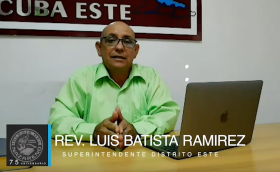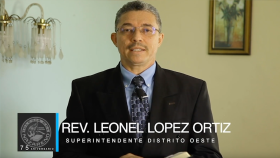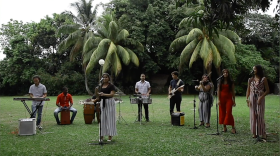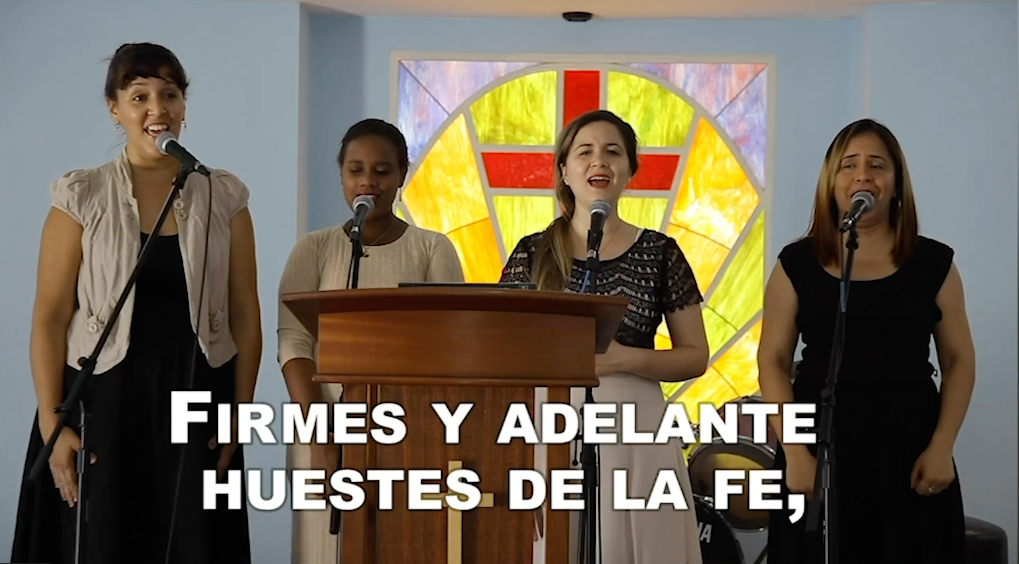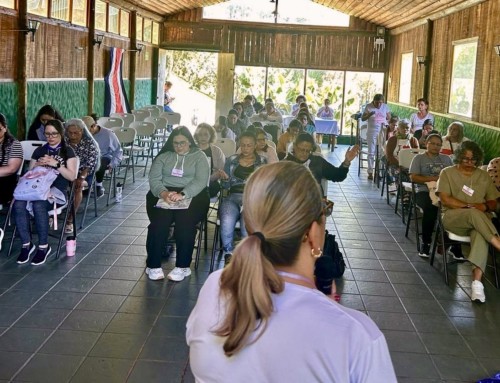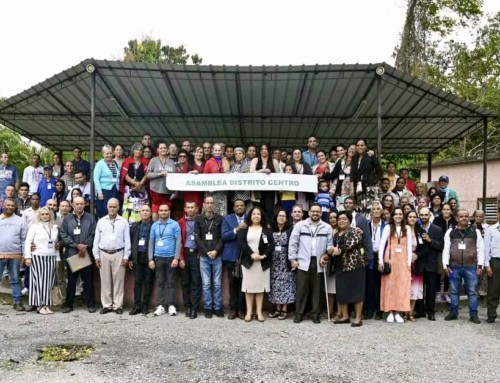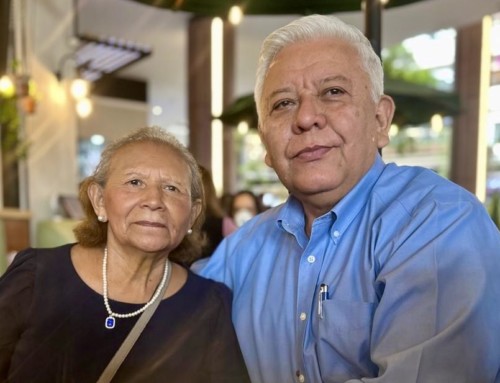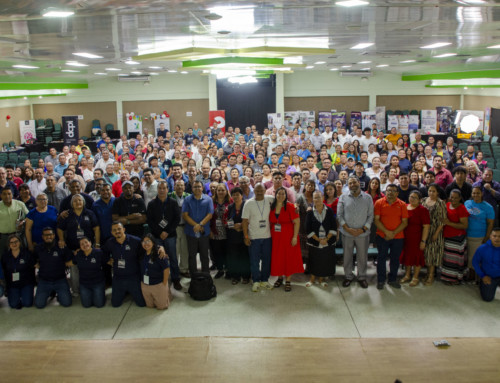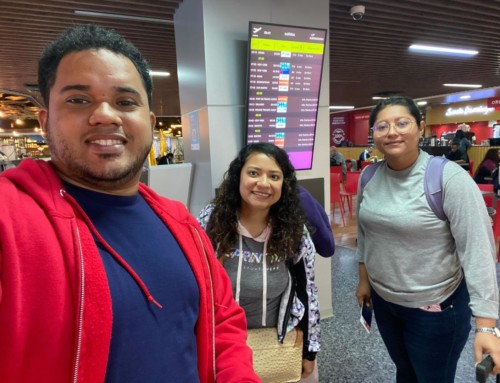On May 26th, 2021, the Church of the Nazarene in Cuba celebrated its 75th anniversary. The celebration was held through the YouTube platform and has had (to date) over 600 views.
The superintendents of both districts in the country, Rev. Luis Batista (East District), and Rev. Leonel López Ortiz (West District), participated in the celebration. Hymns and worship songs were sung, and leaders on a national and regional level, as well as from the United States, gave greetings and motivational words. Among them were the Area Strategy Coordinator, Rev. Carlos de la Cruz, Mary and Paul Jetter, and Robert Prescott, who recalled the first service held in Cuba on May 26, 1946, when he was eight years old, and the first sermon his father, missionary Lyle Prescott, preached in the presence of 10 or 12 people.
The Church of the Nazarene arrived in Cuba with a group of missionaries who arrived at Puerto de Casilda in Trinidad, on the southern coast of the country. It was in 1902, in Trinidad, Provincia de Las Villas (today Sancti Spíritus), where Miss Leona Gardner began a mission. For 25 years she preached to Cubans, trying to establish the church in Cuba.
Years later Dr. H. F. Reynolds, General Superintendent of the denomination, mentioned some of the struggles and trials Gardner experienced. “It was my desire to close our work there, but she wanted us to give her another chance,” were Reynolds’ words. “We Cuban Nazarenes today are thankful for that second chance,” said Leonel López, representative of the church in Cuba.
In May of 1927, Gardner was assigned as missionary to Guatemala by the General Board. Eighteen years later, on November 10th, 1945, Rev. Lyle Prescott and his family were transferred to Cuba. Wanting to recover Miss Gardner’s work, he and his family went by train to Trinidad. After three months there, Prescott decided to establish the Centro Misionero (Missionary Center) in La Habana (Havana). It was there, on May 26th, 1946, that they began a Sunday School in their living room. So, even though the church started in 1902, it didn’t officially begin until 1946.
In March of 1947 the church’s first property was purchased in Mantilla, Havana. From 1949 to 1950 five churches were started on La Isla de Pinos (Pine Island), currently the Special Municipality Isla de la Juventud (Youth Island). That year other missionary families began arriving at the island: the Halls, Coolidgs, and the Hendrixes. Results were visible, as in addition to the growth in La Habana, the church also started to have a presence in provinces such as Pinar del Rio, Cienfuegos, Las Villas, Camagüey, Holguín, and Municipio Baracoa in Guantánamo.
After seven years, in 1952, the report was truly encouraging. It counted 82 members, 26 Sunday Schools with 600 participants and an average attendance of 450 people. By this date the Nazarene Bible Institute had begun with 16 students in Barrio de La Chorrera, on La Calzada de Managua, Arroyo Naranjo, in La Habana. There were six foreign missionaries and 11 national ministers.
After the Cuban revolution on January 1st, 1959, the North American missionaries had to leave the country little by little. On October 30th, 1960, they left a note on the dining room table at the Seminary with the names of the national leaders who would form the Emergency Committee, in charge of continuing directing the church, and this is when, for the first time in history, a Cuban, Pedro Morejón Millians (known as Hildo), became Superintendent during a difficult time for Christians in Cuba.
Due to the difficulties with the government facing the church at that time, many Cuban pastors decided to leave the country, leaving the church in hands of laypeople unprepared for leadership. The church did not have any help from overseas nor any guidance for ordained ministers.
“Many overseas didn’t see a future for the church in Cuba, and knew nothing about the Nazarenes on the island, thinking the church had disappeared, but it wasn’t so,” said López, adding that even with little experience, but with great passion for God’s work, they did not give in and took charge of carrying forward God’s work, trusting in his promises.
“Today, 75 years after having begun this evangelistic and missionary journey, in an unimaginable pandemic, we Cuban Nazarenes pray that God would help us preach his Word every day and evangelize Cuba, holding fast to our essential values as a denomination: We are a Christian people, missional and of holiness,” said López, “but without forgetting the pain of our neighbor, near or far, and extending a friendly hand in the midst of pain or need, conscious that the Gospel is good news, as long as it arrives in time.”
Currently the church in Cuba has two districts, East in Phase II, and West Phase III, and is in the process of organizing a third district in the far east of the country. It also has 149 churches and mission-type churches, around 11,000 members in full standing and associated. There are also about 600 prayer groups.
The Seminario Nazareno Cubano is currently available to all who feel called by God to prepare themselves for service, whether Nazarene or not, as long as they meet the established requirements. The Seminary conveys a certificate in Theology, a Bachelor’s in Theology, Licenciature in Theology, and, in conjunction with the Seminario Nazareno de Las Américas in Costa Rica, a Master’s in Religion with an emphasis on the Church’s Mission, and another in Family.
“On this anniversary we thank God because the Church remains, its members continue being faithful and its mission remains active, even in difficult times such as this worldwide pandemic. Our committment is this: to continue being like Him and making Christlike disciples in Cuba and all nations.”
You can watch the celebration and send messages of congratulations and encouragement to our brothers and sisters in Cuba via the following link: https://youtu.be/V827gWQttoE
Source: Leonel López, representative for the Church of the Nazarene in Cuba.


